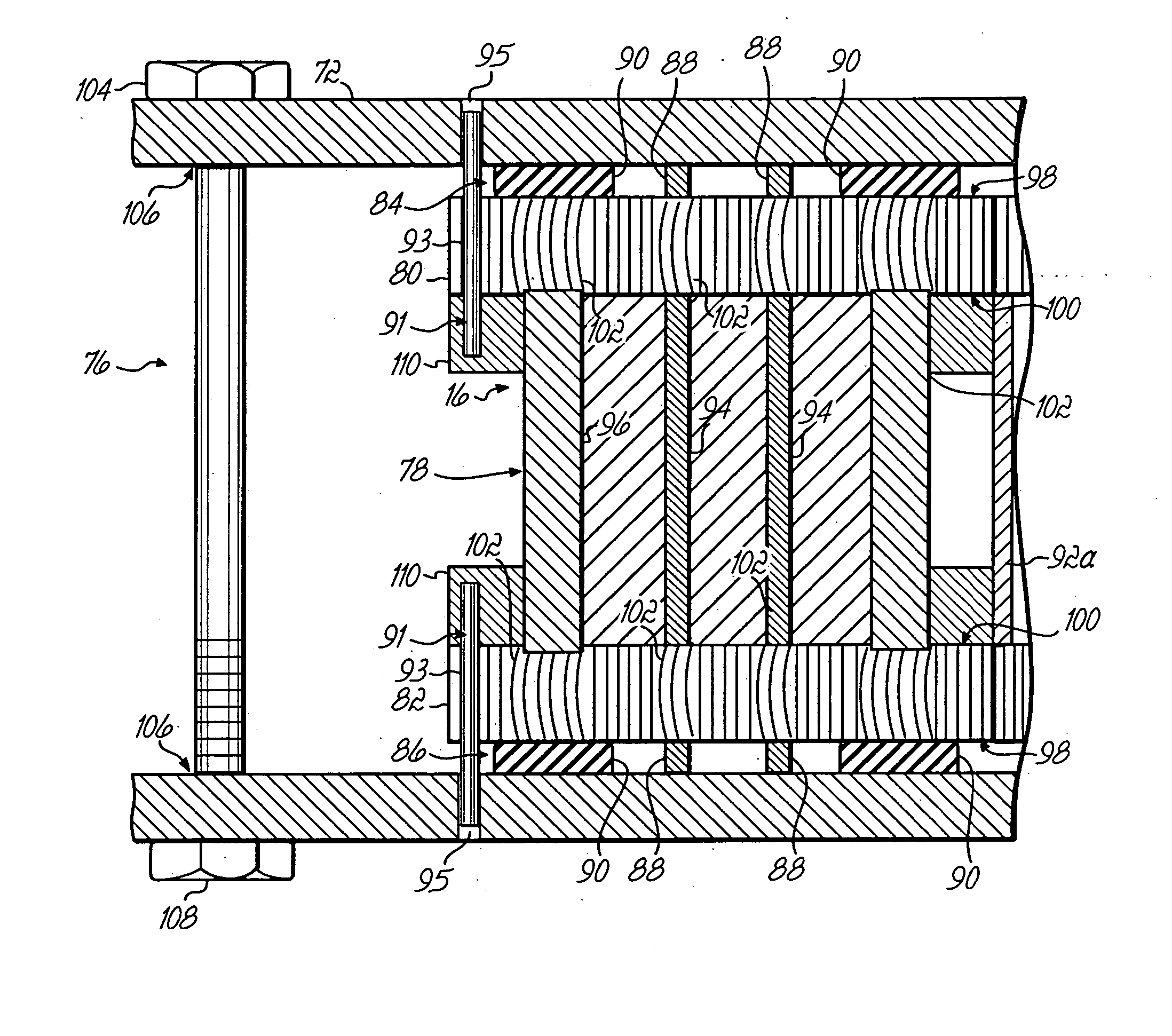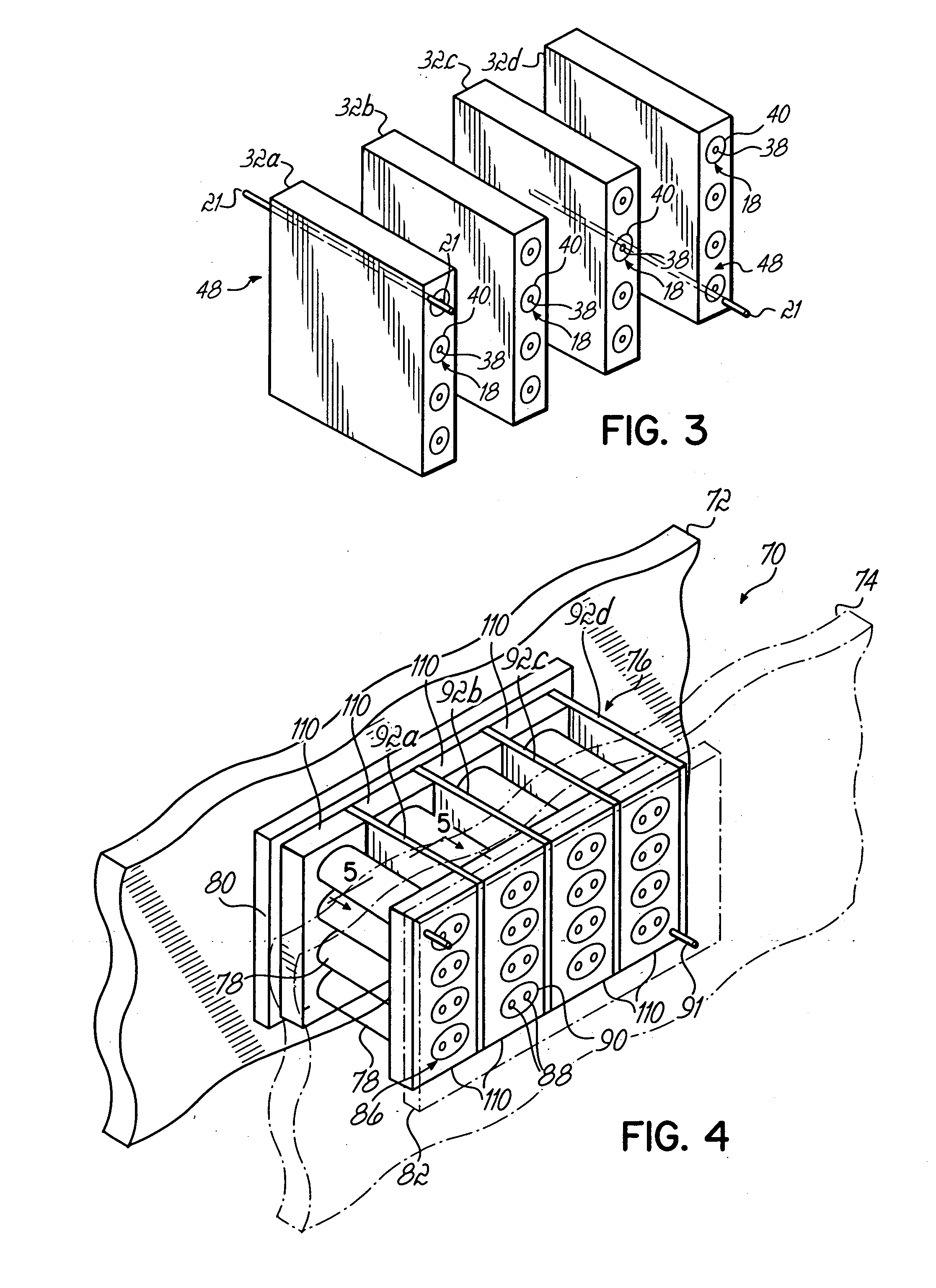Zero insertion force high frequency connector
a high-frequency connector, zero-injection-force technology, applied in the direction of coupling contact members, fixed connections, coupling device connections, etc., can solve the problems of bending one or more pins, each type of pins suffers from common problems, and the backplane typically provides little functionality, etc., to achieve easy replacement and serviceability. , the effect of easy replacemen
- Summary
- Abstract
- Description
- Claims
- Application Information
AI Technical Summary
Benefits of technology
Problems solved by technology
Method used
Image
Examples
Embodiment Construction
[0037] Referring to FIGS. 1 and 2, connector assembly 10 comprises two substantially parallel oriented components, such as circuit boards 12, 14 (circuit board 14 shown in phantom line), a signal array 16 including at least one shielded conductor 18, and compressible interface elements 20, 22 (compressible interface element 22 also shown in phantom line) coupled between each circuit board 12, 14 and shielded conductor 18. Circuit boards 12, 14 include corresponding shielded land areas 24, 26, only shielded land area 26 being shown in FIG. 1. Shielded conductor 18 has opposite ends and includes an axial conductive element 38 and an outer conductive element 40 surrounding the axial conductive element 38. Shielded land areas 24, 26 include a central conductive core area 28 and a conductive outer structure area 30. Land areas 24, 26 on circuit boards 12, 14 may be etched, deposited, or other placed using methods well known to those of skill in the art.
[0038] Although not shown for ease...
PUM
 Login to View More
Login to View More Abstract
Description
Claims
Application Information
 Login to View More
Login to View More - R&D
- Intellectual Property
- Life Sciences
- Materials
- Tech Scout
- Unparalleled Data Quality
- Higher Quality Content
- 60% Fewer Hallucinations
Browse by: Latest US Patents, China's latest patents, Technical Efficacy Thesaurus, Application Domain, Technology Topic, Popular Technical Reports.
© 2025 PatSnap. All rights reserved.Legal|Privacy policy|Modern Slavery Act Transparency Statement|Sitemap|About US| Contact US: help@patsnap.com



